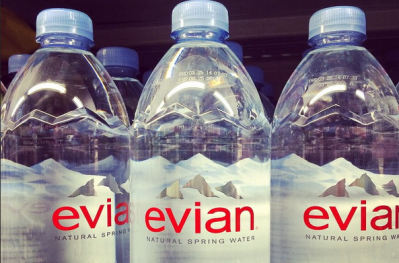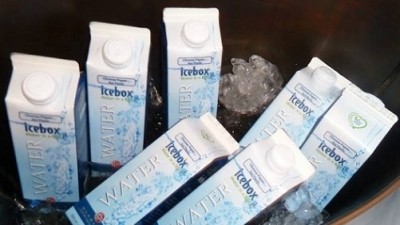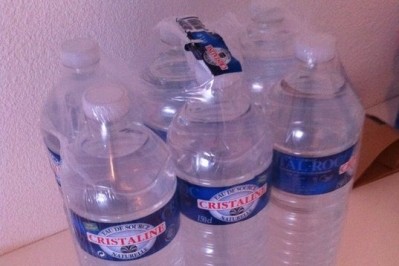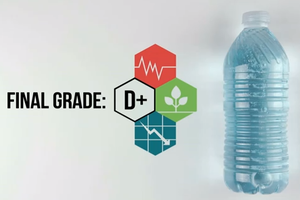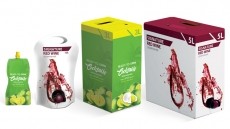IMPORTANT TRADE BODY ATTACKS VIDEO FOR 'INACCURACIES' IN OPEN LETTER
IBWA hits back at 'factually incorrect' video attacking bottled water
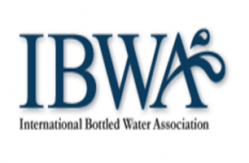
The video itself, which you can view here, attacked a global bottled water industry it said was worth $11.7bn on a variety of heads, claiming that it wasted scarce mineral resources, created a recycling issue, and posed health problems for humans and animals.
But IBWA spokesman and VP of communications, Christoper Hogan hit back this afternoon, setting the record straight from the US bottled water industry's standpoint (the body's membership includes giants such as Danone Waters of America, Nestle Waters North America) with the following response, which we present below in full.
Regarding the quality, health and safety of bottled water:
Bottled water is comprehensively regulated by the U.S. Food and Drug Administration (FDA) as a packaged food product and it provides a consistently safe and reliable source of drinking water. By federal law, the FDA regulations governing the safety and quality of bottled water must be at least as stringent as the Environmental Protection Agency (EPA) regulations that govern tap water.
In some cases, the bottled water regulations are more stringent. And, in some very important cases like lead, coliform bacteria, and E. coli, bottled water regulations are substantially more stringent.
All bottled water products - whether from groundwater or public water sources - are produced utilizing a multi-barrier approach. From source to finished product, a multi-barrier approach helps prevent possible harmful contamination to the finished product as well as storage, production, and transportation equipment. Many of the steps in a multi-barrier system are effective in safeguarding bottled water from microbiological and other contamination.
Measures in a multi-barrier approach may include one or more of the following: source protection, source monitoring, reverse osmosis, distillation, micro-filtration, carbon filtration, ozonation, and ultraviolet (UV) light.
Consumers who choose to drink bottled water can rely on its consistent record of safety and quality. In testimony before the U.S. Congress in 2009, the Food and Drug Administration (FDA) stated that the agency is aware of no major outbreaks of illness or serious safety concerns associated with bottled water in the past decade.
At that same hearing, the Government Accountability Office (GAO) made public its report on bottled water, which found that based on a survey of water quality and health protection officials in all 50 states and the District of Columbia there was no evidence that bottled water caused any illnesses during the previous five years. (See United States Government Accountability Office Report on Bottled Water, GAO-09-610, June 2009.)
In contrast, EPA scientists and researchers have estimated that tap water consumption is the cause of over 16 million cases of acute gastrointestinal illness (vomiting and diarrhea) in the United States each year (Messner M., et al., Journal of Water and Health, 2006; 4(Suppl 2):201-40).
Regarding PET plastic and BPA
PET plastic bottles, commonly small, portable 16.9 (half-liter) and 24 ounce sizes, are considered safe and reliable for food contact use. PET is used in a variety of packaging for many foods, including everything from peanut butter, soft drinks, and juices to beer, wine, and spirits. PET is approved as safe for food and beverage contact by the FDA and similar regulatory agencies throughout the world, and has been for over 30 years.
DEHP, once used in bottled water container caps, has not been used in any bottled water containers for many years.
The video also claims that PET plastic bottled water bottles are unsafe due to the presence of bisphonal A (BPA). This statement is factually incorrect as BPA is not present in PET plastic. Even though PET does not contain BPA, regulatory agencies in several countries and the U.S. Food and Drug Administration (FDA) have ruled favorably on the safety of BPA.
The consensus among these international regulatory agencies is that the current levels of exposure to BPA through food packaging do not pose an immediate health risk to the general population.
Regarding environmental claims
Bottled water’s environmental footprint is the lowest of any packaged beverage according to a life cycle assessment conducting by Quantis in 2010. Moreover, between 2000 and 2008, the average weight of a 16.9 ounce single-serve polyethylene terephthalate (PET) bottled water container dropped by 33 percent. In fact, many bottled water companies are already using recycled plastic in their bottles and some are producing 100 percent recycled PET water bottles.
All bottled water containers are 100 percent recyclable, and, according to the National Association for PET Container Resources (NAPCOR), with a rate of 32.25 percent, PET plastic bottled water containers are the single most recycled item in U.S. curbside collection programs. U.S. Environmental Protection Agency (EPA) figures demonstrate that plastic water bottles make up less than 0.03 percent of the U.S. waste stream.
Recycling rates for single serve bottled water containers are on the rise, doubling in the last five years. The bottled water industry supports strong community recycling programs and is continually looking for ways to strengthen those programs ever further.
Additionally, the PET plastic used in single-serve bottled water containers is made using naphtha, a petroleum byproduct, not barrels of virgin oil. Naphtha is actually a byproduct of the refining of oil into fuels. The use of PET plastic does not increase oil production.
